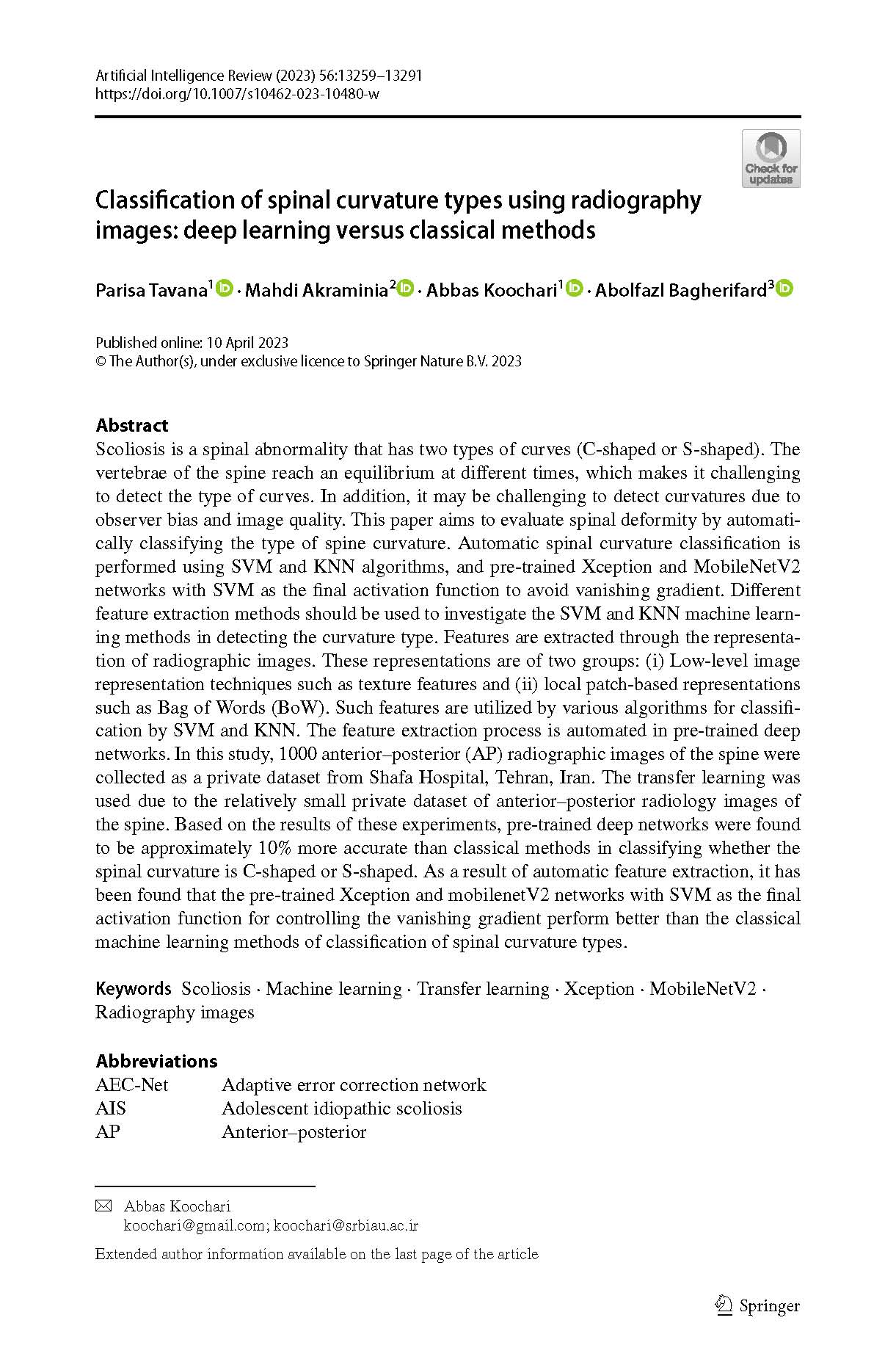Classification of spinal curvature types using radiography images
deep learning versus classical methods
Article Ecrit par: Koochari, Abbas ; Akraminia, Mahdi ; Bagherifard, Abolfazl ; Tavana, Parisa ;
Résumé: Scoliosis is a spinal abnormality that has two types of curves (C-shaped or S-shaped). The vertebrae of the spine reach an equilibrium at different times, which makes it challenging to detect the type of curves. In addition, it may be challenging to detect curvatures due to observer bias and image quality. This paper aims to evaluate spinal deformity by automatically classifying the type of spine curvature. Automatic spinal curvature classification is performed using SVM and KNN algorithms, and pre-trained Xception and MobileNetV2 networks with SVM as the final activation function to avoid vanishing gradient. Different feature extraction methods should be used to investigate the SVM and KNN machine learning methods in detecting the curvature type. Features are extracted through the representation of radiographic images. These representations are of two groups: (i) Low-level image representation techniques such as texture features and (ii) local patch-based representations such as Bag of Words (BoW). Such features are utilized by various algorithms for classification by SVM and KNN. The feature extraction process is automated in pre-trained deep networks. In this study, 1000 anterior-posterior (AP) radiographic images of the spine were collected as a private dataset from Shafa Hospital, Tehran, Iran. The transfer learning was used due to the relatively small private dataset of anterior-posterior radiology images of the spine. Based on the results of these experiments, pre-trained deep networks were found to be approximately 10% more accurate than classical methods in classifying whether the spinal curvature is C-shaped or S-shaped. As a result of automatic feature extraction, it has been found that the pre-trained Xception and mobilenetV2 networks with SVM as the final activation function for controlling the vanishing gradient perform better than the classical machine learning methods of classification of spinal curvature types.
Langue:
Anglais
Thème
Informatique
Mots clés:
Machine learning
Scoliosis
Transfer learning
MobileNetV2
Xception
Radiography images

